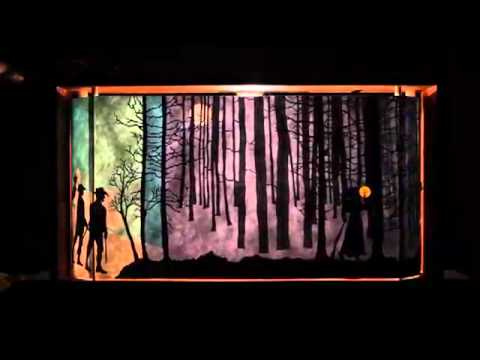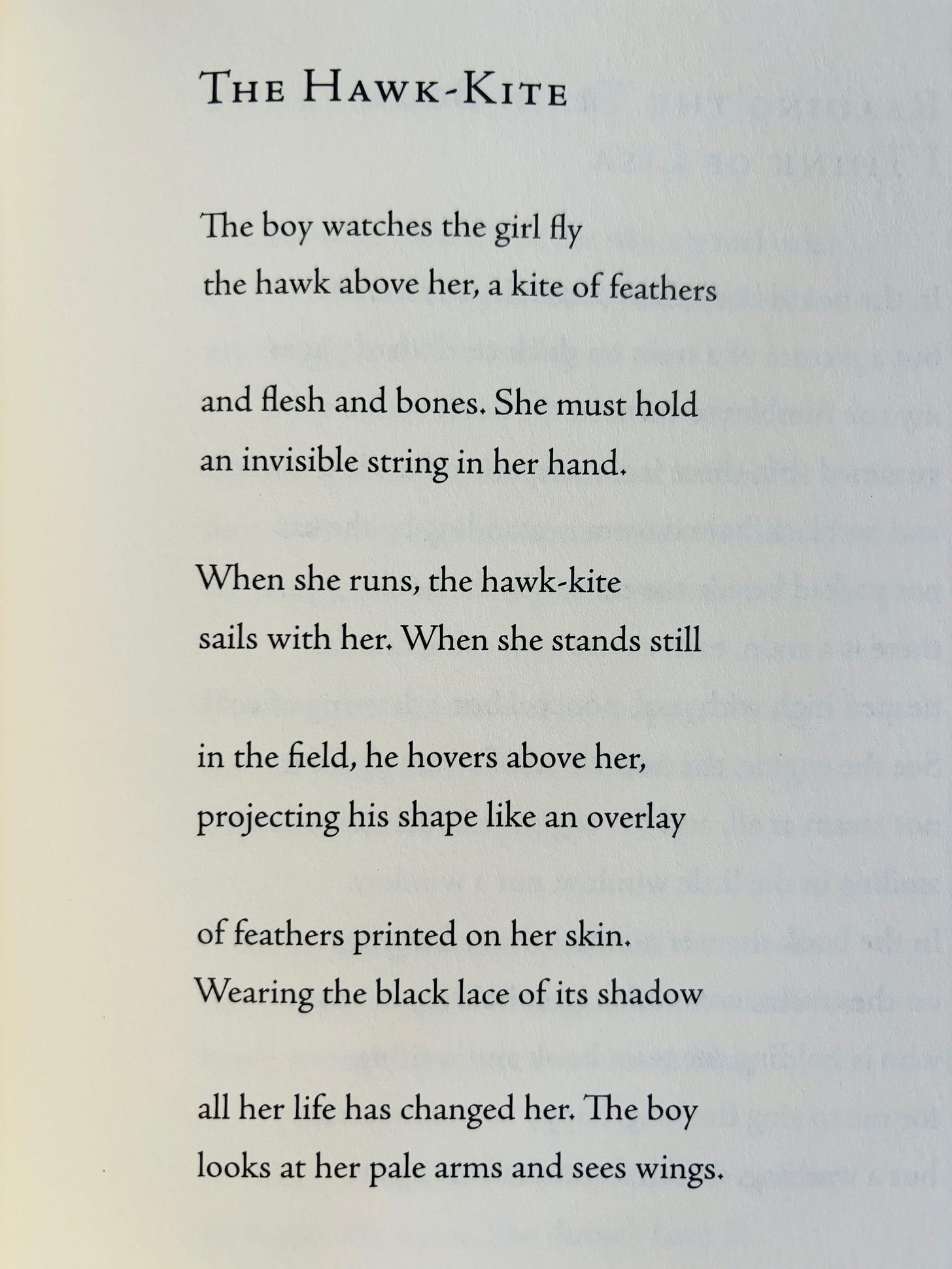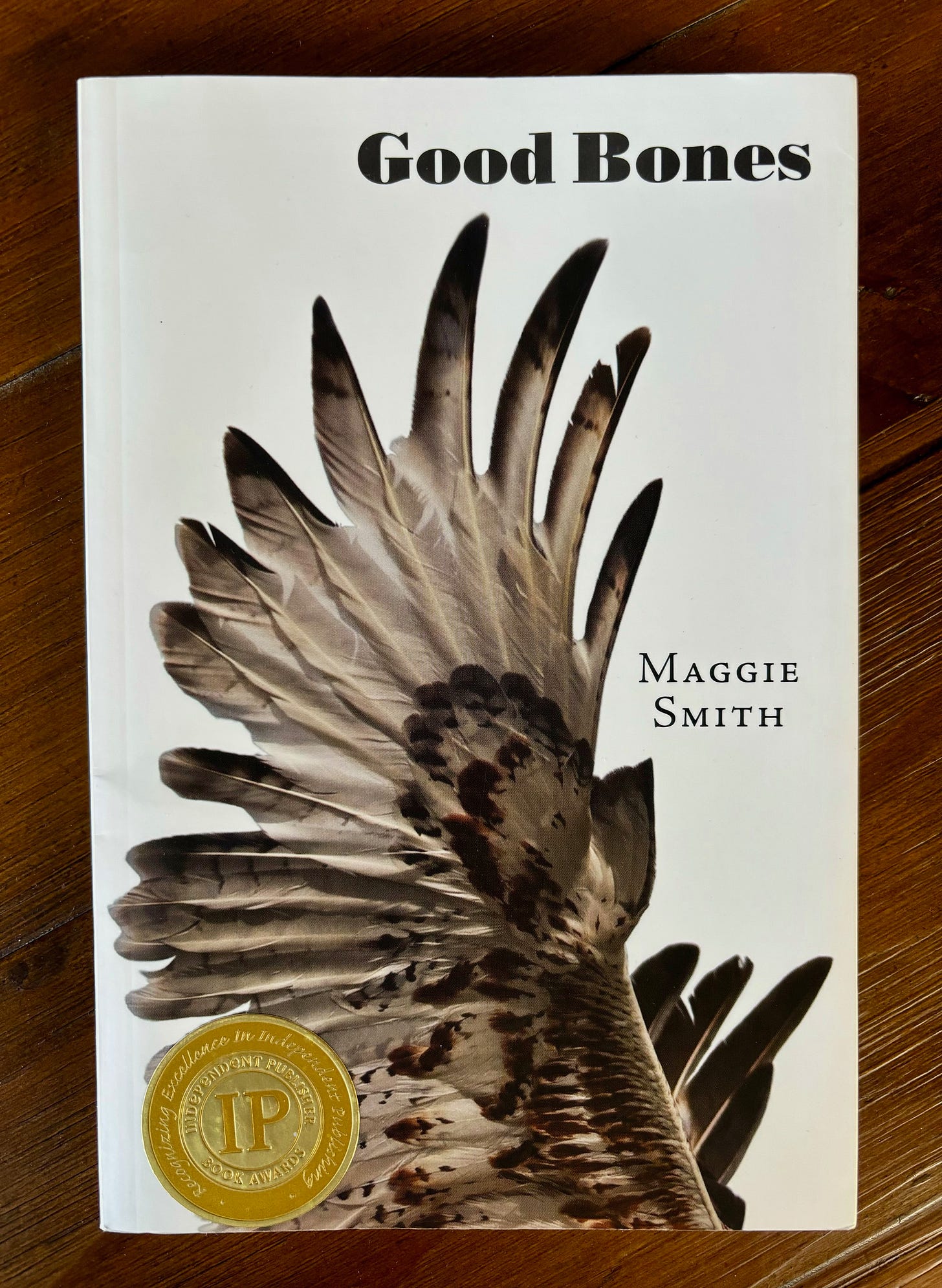Hi, Friend.
I don’t know if you feel this way, too, but sometimes I swear things connect in ways that seem too magical to be coincidental. It’s like you can almost hear them click into place.
Recently, when I was signing books after an event for My Thoughts Have Wings, a woman mentioned the connection between the cover art for the picture book and the series of poems from Good Bones, in which a hawk follows a young girl, training its shadow on her. “Did you plan that?” she asked.
I gasped. Audibly gasped, my mouth hanging open, my eyes wide. Not only had I not planned that, I hadn’t even made that connection. As far as I know, the book’s illustrator, Leanne Hatch, hasn’t read those poems. Here is the cover art:
And here is one of the poems from Good Bones, “The Hawk-Kite,” which was first published in Virginia Quarterly Review ten years ago, in 2014.
This poem has a visual-arts-related origin story. In the fall of 2011, I was a fellow at the Virginia Center for the Creative Arts, working on my second book of poems, The Well Speaks of Its Own Poison. There were writers, painters, composers, installation artists, and sculptors there from all over the country—all over the world, actually—including one artist from Baltimore who works primarily with cut paper. Her name is Katherine Fahey.
One night Kathy hosted the VCCA fellows in her studio and performed a shadow puppet “crankie,” an old-fashioned, hand-cranked device that scrolls paper across the front like film in an old camera. The crankie Kathy performed was inspired by a traditional folk song about the life of Elizabeth Whitmore, a midwife in Vermont in the mid-1700s. Elizabeth and her young daughter were alone in the wilderness for a time while her husband Francis was away working.
Here is a video performance of “Francis Whitmore’s Wife” so you can see for yourself. Each individual snowflake, figure, and animal scrolling was cut by hand and affixed to the Tyvek paper. Kathy also made the shadow puppets that move—the couple and their horse, the woman chopping wood, the cows walking into the distance. And that’s Kathy singing, too.
I remember telling her that night, “If I had made something that beautiful, I could die happy.” I’d never felt that way about one of my poems or even one of my books.
That night, inspired by Kathy’s performance, I went back to my own studio and wrote a poem inspired by the crankie, “Marked.” In 2011, that family of three Kathy sang about—man, woman, young daughter—mirrored my own family, but I also invented another character: a hawk who is so enchanted by the young girl, it follows her. Here are a few lines from that first poem, “Marked,” which I wrote that night in my studio at VCCA. It appears in Good Bones and was first published in The Southern Review:
The girl has an eye like a spyglass for birds.
She must be marked, the woman thinks.
Wherever she walks, the shadow of a hawkfalls on her, the way a light trains on something.
When my fellowship ended, I came home to Ohio and wrote another poem about these characters and this setting—and then another, and another, and another. I decided against researching Elizabeth Whitmore because I don’t want to feel bound by the details of her life. Instead I used her story, via Kathy, and Kathy’s art, as springboards, inventing my own details and incorporating my own experiences into the poems. The poems are full of references to cut paper, shadows, and silhouettes, which point to Kathy’s work.
For a while I thought I was perhaps writing a chapbook, or even a historical novel-in-verse, but I decided that the long series of poems would live alongside more contemporary and more obviously autobiographical poems in my next book manuscript. (I was encouraged by Louise Glück’s work, Meadowlands in particular, in which the mythic and contemporary are in conversation.) So this series of hawk-and-girl poems anchors Good Bones.
One of the most exciting things about the project for me was the role inspiration played—a woman in history inspired a song, which inspired the crankie, which inspired the poems. Later, Kathy shared that the poems inspired her to create some new cut-paper pieces. This is the power of cross-pollination.
It often feels magical to me, the way our work is constantly in conversation—with the work of others, and with the work we’ve done before, with the world we live in. Everything touches.
Whose work has inspired you? What unexpected, serendipitous connections have you noticed in your own life and work?
Happy writing (& connecting)—
Maggie







I love this so much! Not only because serendipity is my favorite word because it feels magical or mystical or like a gift from the gods. Thank you for sharing what inspired the poem and thank you for that tuned-in woman who noticed this! It makes it more fun that it wasn’t you that noticed!! Makes us all want to get out in the world and notice, create, and connect!!!
I remember when I was a modern dancer in high school that periodically a single move would infect everyone's choreography across the entire dance program-- a particular lift or jump or way of leaning in or reaching out. And it was all entirely unconscious, I think. We were all just on top of each other all the time, like puppies in a pile, and we couldn't help passing ideas around like a bad cold. Except it was good. A good cold?
The weird thing about writing, for me anyway, is how disembodied it is compared to that. I'm inspired by all sorts of authors I've never met and likely never will. Sometimes I don't even realize an idea or perspective has wormed it's way into my consciousness. It will just start popping in, and I have to really think about it. Like, where did that come from? All this to say, I don't have a clear answer to your question. Though I can say that your process has informed me. I'm now working on writing all the different stories in my memoir as discrete documents, even if they end up being contiguous in the end, so that once I have them all drafted I can more easily swap them around until I get the right order for the final draft.